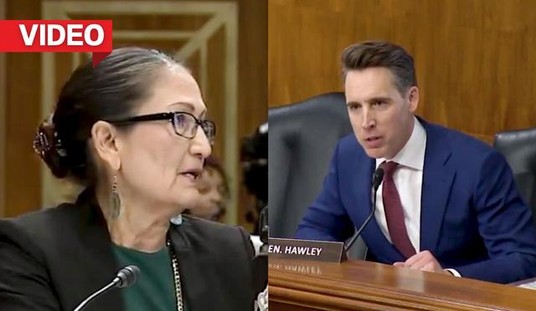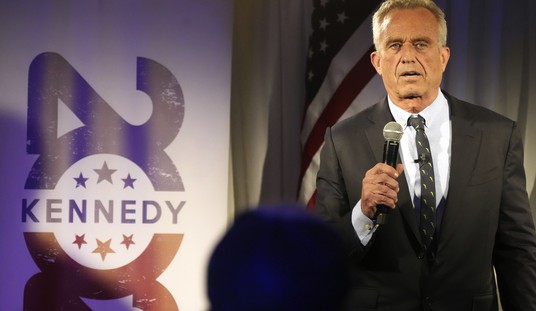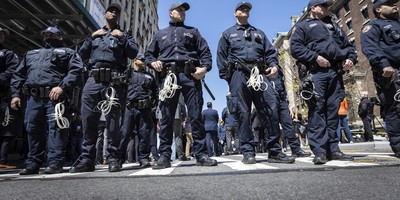Amid the latest round of "pick your poll" -- in which Trump supporters are eagerly citing a new CNN poll showing a tightening race and a dead heat in battleground states, with Trump opponents pointing to a trio of surveys giving Joe Biden a nine- or ten-point lead -- is there actual voting data that could augur another polling misfire in 2020? Back in 2016, national polls came within approximately one percentage point of nailing the final
"popular vote" margin, but the numbers in some key states proved to be way off. Writing in the Washington Post, Henry Olsen (who has been highly skeptical of the "silent Trump voter" effect) analyzes actual electoral results out of Washington State and wonders if they may bode relatively well for Republicans overall:
Washington’s primary has a long record of forecasting the state’s general election results. All candidates appear on one ballot regardless of party, but each can identify which party he or she prefers. (The top two finishers in the primary, regardless of party, face off in the general election.) Political pros add up the votes for candidates by party preference to come up with the district’s overall partisan lean. In the past decade, the difference between Democrats and Republicans in Washington’s congressional primaries has been within five points or fewer of the partisan gap in the general election in 26 of 37 opportunities. Moreover, the party that led in the primary also won the seat in the general every time.That track record is why the state’s recent primary results are so important. With more than 99 percent of the votes counted, Republicans have a higher share of the total vote than they did in 2018 in eight of the state’s 10 congressional districts. (Both seats where they have declined are in ultraprogressive Seattle.)
That alone would suggest that Republicans in the state will fare better in November than they did in the midterms two years ago, even though the national polls suggest they will not...A deeper dive yields even more positive news for the GOP. Republican candidates exceeded their 2018 vote share by 5 points or more in the five seats that don’t include parts of Seattle’s King County or its major suburb, Snohomish County. That indicates the GOP is gaining a lot of support over 2018 in the same kind of rural and small metro areas across the country that helped elect Trump in 2016 and allowed the party to flip Senate seats in Indiana, Missouri and North Dakota in 2018. If Washington’s pattern applied nationwide, it would mean Trump would be much more competitive in swing states such as Wisconsin and North Carolina than the polls currently show.
Recommended
That's a lot of "if's" building on "maybes," but it's something. It might point to an environment where Republicans are a tad more competitive than the conventional wisdom holds, and any meaningful Democratic erosion in the 'burbs over the next few months really could change the game. Olsen examines two more "marginal" congressional seats within the Washington delegation, with a GOP target blowing out the Democratic competition, and a Democratic incumbent at least appearing to be vulnerable. He notes that turnout was extremely high, which suggests the "jungle-primary-as-general-election-preview" pattern in Washington has a good chance of holding. He warns that GOP support in urban and suburban areas remains 2018-level weak, which could spell disaster for the party, asserting with a dash of understatement that "Trump's re-election efforts also would be benefited by even a slight upturn in his suburban fortunes."
He adds, "the Republican surge in rural and small-metro Washington, however, suggests that Trump and GOP House and Senate candidates across the country could surprise the pundits again. Nine of the House GOP's top Democratic target seats have at least substantial portions of voters who live in rural and small-town areas. Key Senate targets in Maine, Montana, North Carolina and Georgia have similar profiles. Trump could also be saved by an uptick in support in these areas." Finally, in a warning against over-extrapolation, Olsen admonishes readers, "one should never draw sweeping conclusions from a single data point. But the Washington primary results hint that something may be happening below the radar and the polls aren't picking it up."
There's a fine line between straw-grasping and picking up on under-reported but important data trends. This analysis could look brilliant in November, or it could be forgotten as an overblown fluke. But if I were a Democratic strategist, I'd be concerned that even if what Olsen detects doesn't represent enough votes for Trump to shock the world again with a second upset victory, it could complicate the Left's designs to simultaneously win back the Senate and exert unified control of government for at least two years, starting in 2021. Meanwhile, it's looking more apparent that there has not been a Kamala Harris boomlet for the Biden campaign -- in spite of the tedious efforts of the media and Democratic professionals to try to will it into existence:
The NBC News/WSJ poll, the Fox News poll, the CBS News poll, the CNN poll, and the ABC/WashPost poll do not show a post-Kamala surge. If anything, maybe Biden’s lost a little ground. Biden’s pre-Kamala lead was probably close to his natural ceiling.https://t.co/4Bn55XiTXh
— Jim Geraghty (@jimgeraghty) August 17, 2020
Just released @NBCNews @WSJ shows @KamalaHarris with lowest net positive rating of any VP candidate when first put on a Dem ticket since '92. Economy named the most important issue, with @realDonaldTrump holding a 10-point lead on the issue over @joebiden. https://t.co/2FpAac56RS
— POS (@POStrategies) August 16, 2020
Polling will soon be overtaken by convention-era numbers, but it really looks like Harris has been a net-meh factor, as predicted. As for the NBC/WSJ survey referenced in the second tweet above, that's the good news for Team Trump. Harris isn't moving the needle for Biden, and the incumbent has a double-digit lead on the economy, which voters cite as their top issue. If a political scientist read those two facts in isolation -- "challenger's running mate selection offers no bounce, incumbent leads by ten on the economy" -- he or she would be forgiven for assuming that the candidate seeking re-election would at least be somewhat favored in the top line numbers. In fact, Joe Biden holds a nine-point, head-to-head lead over Trump in the poll, in spite of voters preferring the Trump/GOP approach to the economy.
By a 22-point margin, Biden supporters in the survey responded that their preference is rooted in a desire to vote against Trump, as opposed to a determination to cast a ballot for Biden. Many respondents are effectively acknowledging that they favor some of the president's policies and outcomes on important metrics (and likely will not be suckered by some of the dishonest attacks Kamala Harris test drove in her speech last week), yet on balance want to prevent a second term. Biden is the vessel ("he's fine") to achieve that end. That's a worrying reality for the Trump campaign, whose hopes for a comeback may overwhelmingly rest on a prevailing sense of optimism and improvement about COVID taking hold by mid-October. I'll leave you with a new swing state poll out of Tar Heel country, which is also hosting a competitive and expensive Senate race:
A new ECU poll in North Carolina finds Joe Biden and Donald Trump tied in the presidential race, 47% to 47%.
— Hal Marshall (@HalMarshall2309) August 17, 2020
In the U.S. Senate race, Cal Cunningham, (D) leads Sen. Thom Tillis (R), 44% to 40%.https://t.co/J1qLWvZTtR
Parting thought: What else has been happening in Washington State that could potentially alienate voters who aren't hardcore progressives?

























Join the conversation as a VIP Member